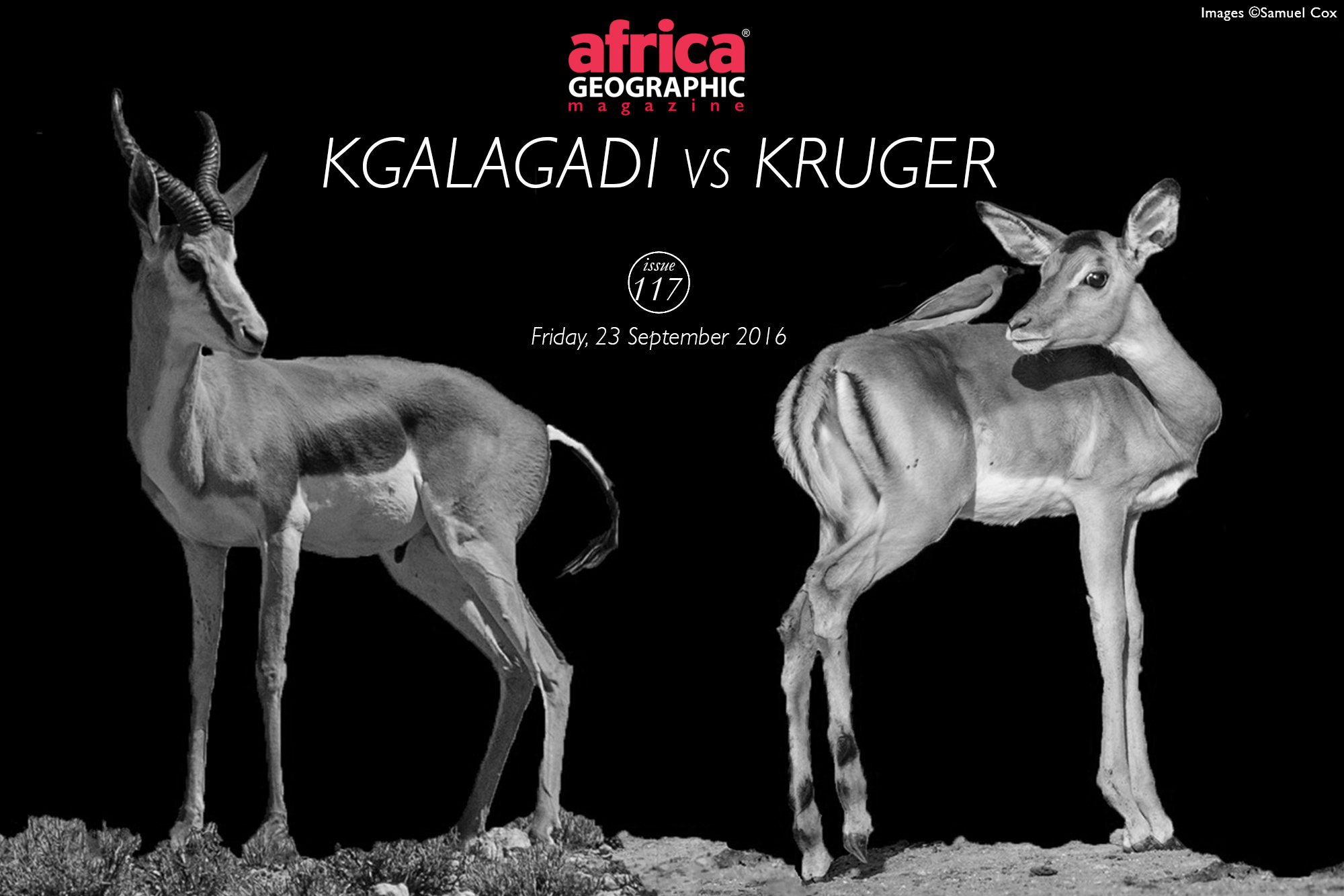
Which of these two iconic transfrontier parks do you prefer?

Calm down; I can practically hear you screaming at me already! I know, I know, the two parks cannot, and perhaps should not, be compared. But the truth is that I cannot get the red dust of the Kalahari out of my one shoe while my other foot is still firmly planted in the land of the Kruger-holics. So I do find myself comparing the two. And, as South Africa’s biggest national parks – both of which claim transfrontier status and are popular amongst local and foreign visitors alike – I am sure I am not the only one who weighs up the options when faced with two weeks of annual leave. To Kruger or Kgalagadi? So recently when faced with that impossible either/or decision, I did what few men dare and spent a week in each, and here is my comparison like it or not.

My experience
Kgalagadi
To compare apples with apples, I stuck to the SANParks camps on the South African side of the park and divided my time equally between Twee Rivieren, Mata Mata and Nossob. We camped in true Kgalagadi style and, while I am still finding sand in many a crevice, it is the way to go. A cold spell during our time in the park in August meant that temperatures at night reached a chilly -9°C and that, despite popular opinion, mornings and evenings were not necessarily the best time for sightings.
The silence, vastness and unexpected beauty of the landscapes are what stand out from my trip. The image of a wildebeest left dying alone at a waterhole, while a jackal awaited his imminent demise and an oryx stood guard over his body, is forever etched in my memory as a symbol of this land of contrasts and of life and death in a magical desert.
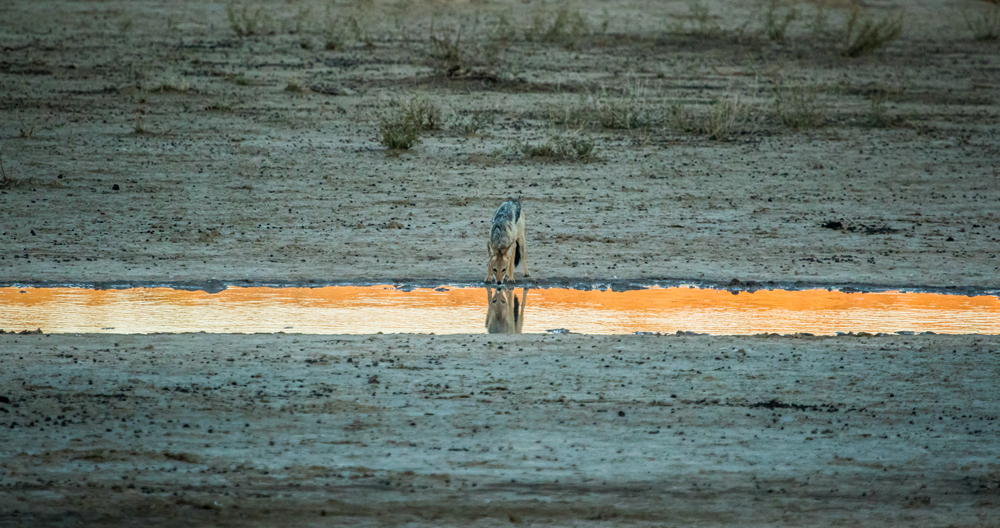
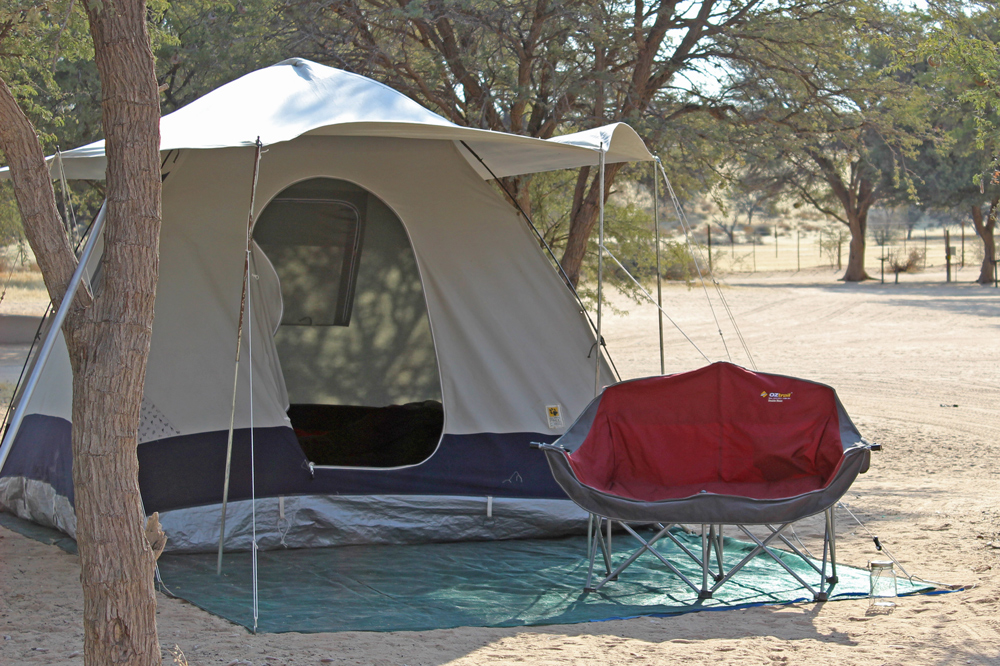
Kruger
It is not humanly possible to cover all that Kruger offers in a week. From walking safaris to rustic bush camps, 4×4 trails, golfing, and a host of accommodation options, Kruger has it all. That said, I am a firm believer that a visit to the Kruger is best enjoyed slowly. Take it easy, make yourself a base at one of the exquisite rest camps, and indulge a little.
A region where nature meets hospitality and a connection between man and beast reigns supreme
So with this in mind, I divided my time between some of the popular camps in the south of the park to get a taste of what the average visitor experiences. While not everyone’s cup of tea, I like that I can stop for a great steak and a glass of wine at one of the modern restaurants in the rest camps and that well-tarred roads and little loops mean I can return to the shop easily when the need for ice cream calls. By doing it this way, there was always something new to gawk at around every corner, and a host of picnic spots and places to stretch my legs – and it was these simple comforts that stood out from my trip.
The image of an elephant taking a morning drink at the waterhole outside the rest camp while I sipped on my cappuccino is etched in my memory as a symbol of this region where nature meets hospitality, and a connection between man and beast reigns supreme.

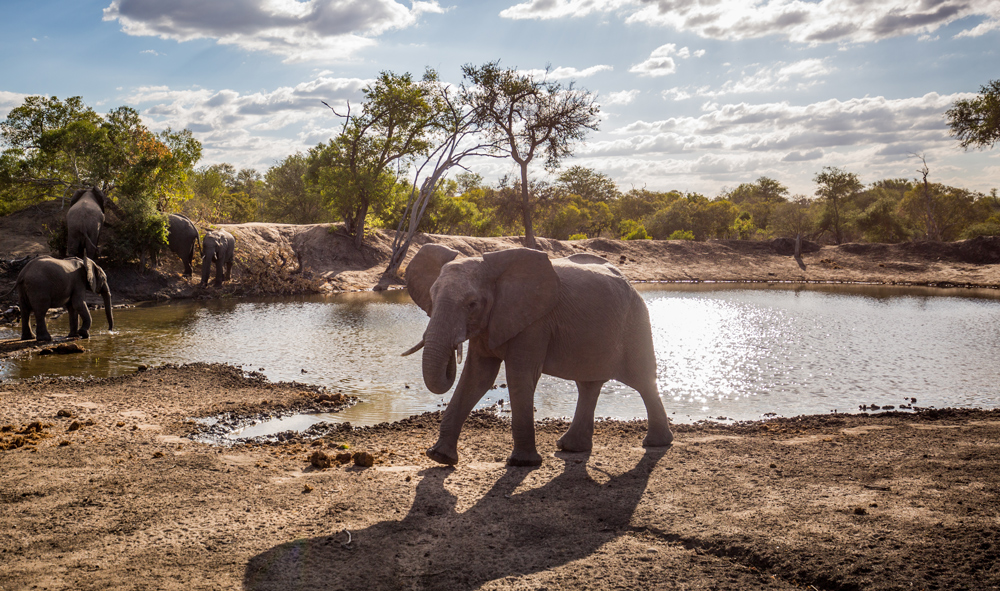
What you can expect to see
Kgalagadi
Big cat sightings in the Kgalagadi are incredible. The wildlife densities are lower than in Kruger, which means that you can drive for a couple of hours with little more than some oryx, springboks and wildebeests to keep you entertained. But when you do see big cats, the sightings are pretty spectacular. Talking to fellow red-dust fanatics in our campsites, stories ranged from cheetahs climbing trees and four tiny cheetah cubs playing, to big black-maned lions causing a roadblock and an entire pride lazily lapping at the waterhole. My big cat sightings included spending time alone with a leopard for about half an hour, a cheetah calling consistently while we followed it at a leisurely pace, and a lion causing heart palpitations right next to the fence at Nossob Rest Camp.
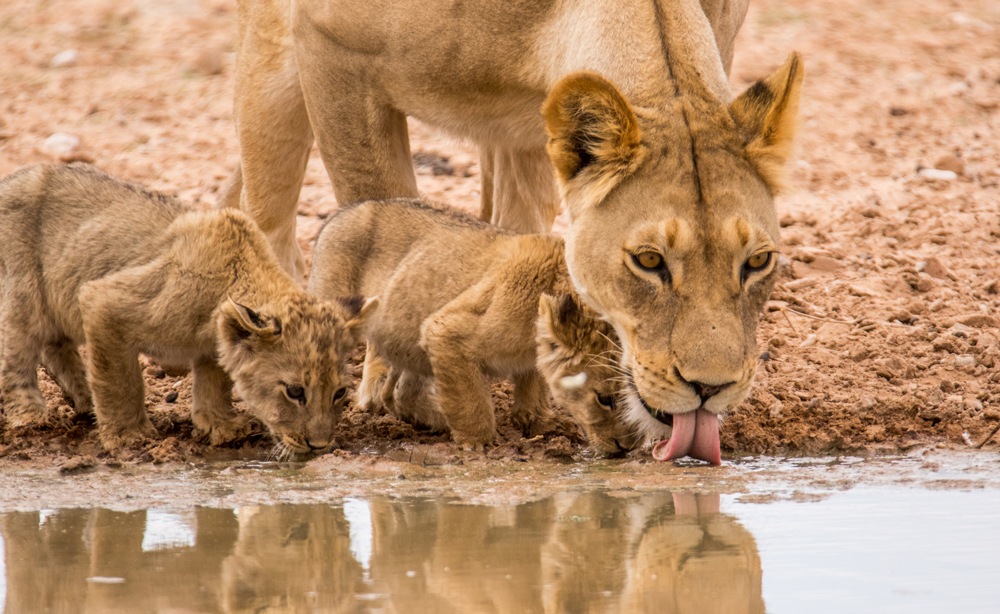
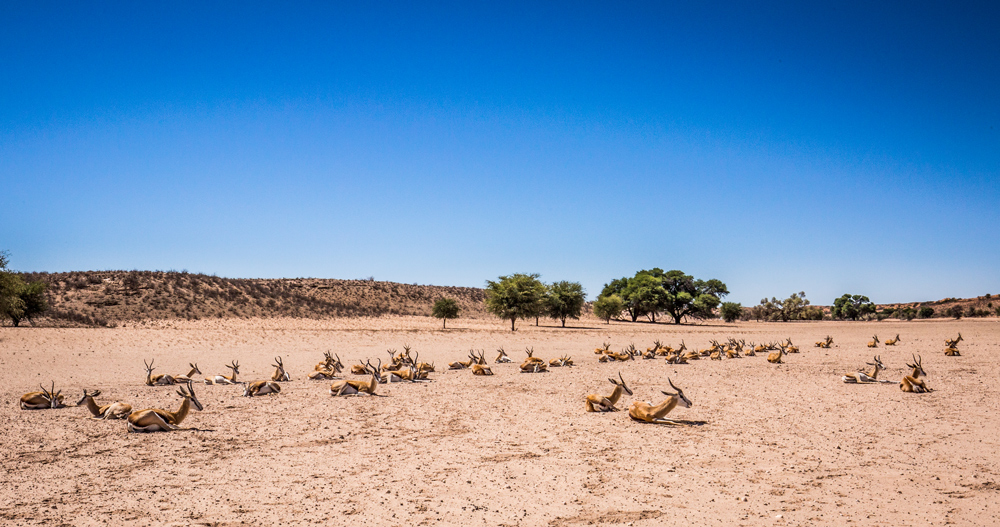
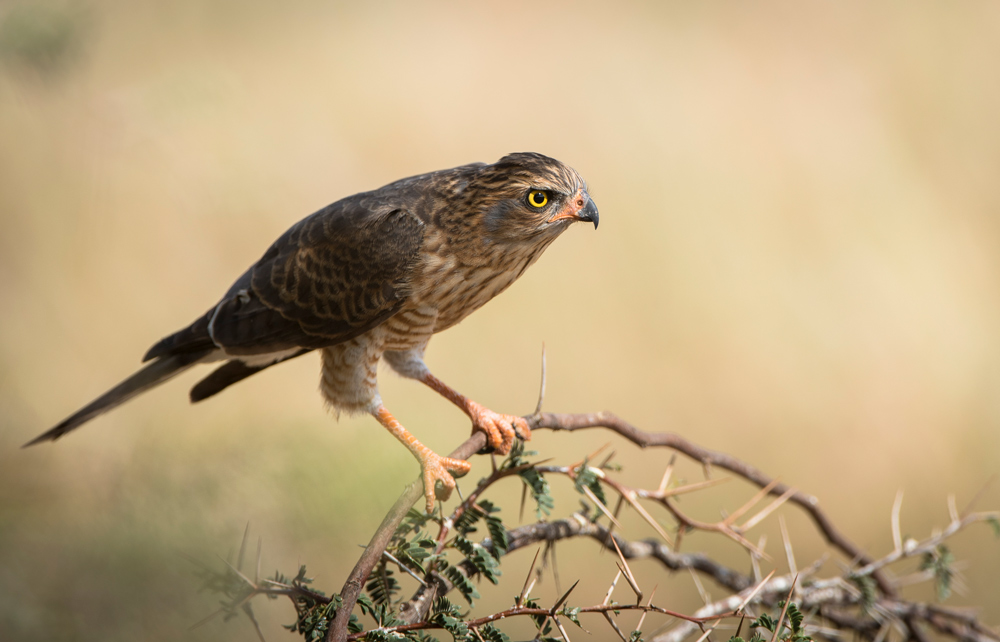
Everyone we met in the Kgalagadi was also mad about birds in some way, and raptors are a sheer delight in this part of the world. Much to my mom’s dismay, there was a bird of prey around every corner. Still, even her non-birder self eventually learnt to appreciate just how close you could get to a martial eagle or spotted eagle-owl in the Kgalagadi.
With this in mind, Kgalagadi is a treat for photographers, thanks to its relaxed wildlife, majestic light, fewer cars and spectacular scenery. Smaller animals are also always around to entertain and provide great subjects on which to test your photography skills and camera settings. From meerkats and ground squirrels to whistling rats and sociable weavers, which astound with their gigantic nests on virtually every tree, you will always find an interesting subject at which to point your lens.
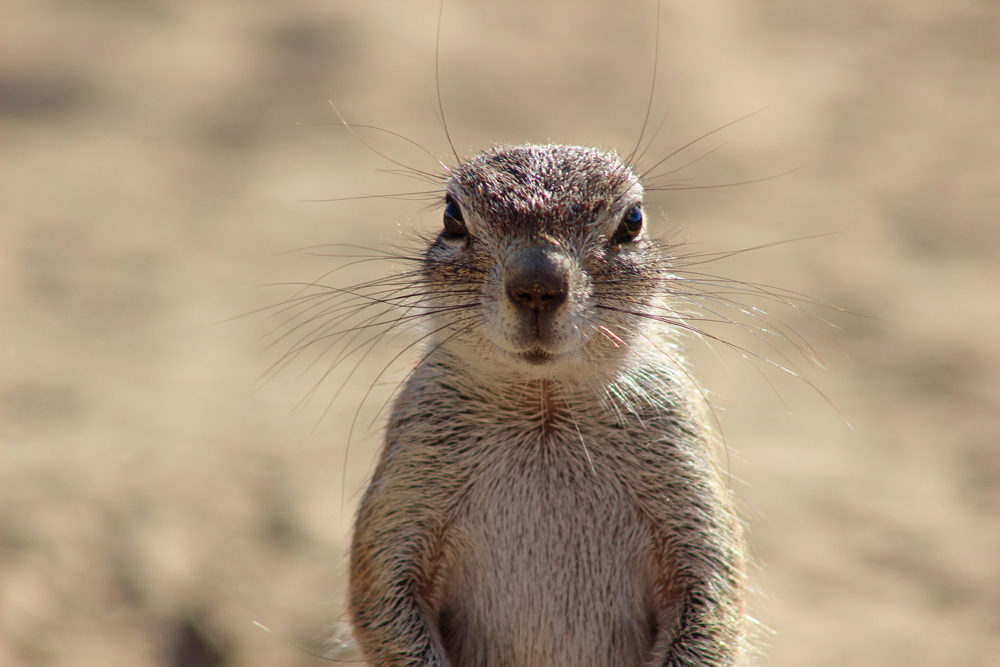


Kruger
Great for first-time safari-goers, it is not uncommon to see the Big Five in one day in Kruger – be it on a self-drive or guided safari. Apart from the famous five, Kruger is home to an impressive number of species – including almost 2,000 plants, 147 different mammals and 517 bird species. Some of the more interesting animals, which a fair amount of people have been lucky to spot, include wild dogs, bushbabies, aardwolves, aardvarks, pangolins, and roan and sable antelopes.
The wide variety of animal species and high density of game means that a safari in Kruger offers something new every day – even something new around every corner – and it is precisely this that calls people back to this great land time and time again. From crocodiles and hippos to elephants and rhinos, zebras and giraffes, Kruger is also great for bucket-list tickers, first-time safari-goers or families with small kids.
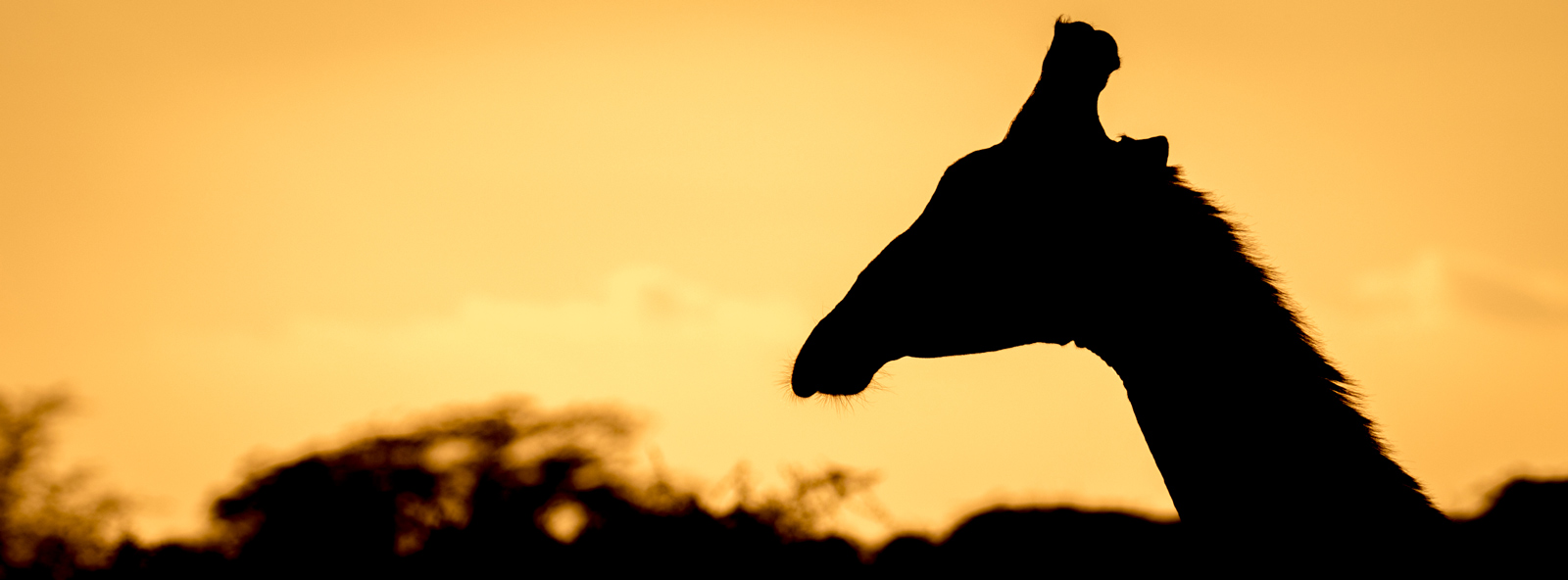
My trip to Kruger included close-up sightings of elephants, rhinos, cheetahs and lions – all either just off the road or directly in our way, although we weren’t asking them to move. The majestic leopard continues to elude me when I visit the park; however, a quick two nights in the Sabi Sand, which is part of the Greater Kruger ecosystem, meant I got my spotted fix.
Photographic opportunities were limited in the park itself as sightings were often shared with a fair number of other vehicles, but this is the price you pay for staying in the south during the busy season. If you venture further north on roads less travelled, or on foot on one of the walking trails, you’ll probably find that sightings are much more rewarding. By experiencing Kruger on foot, I have had male lions all to myself, have come face-to-face with elephants, and have watched hippos take to the water at a spot that can’t be reached in a vehicle.
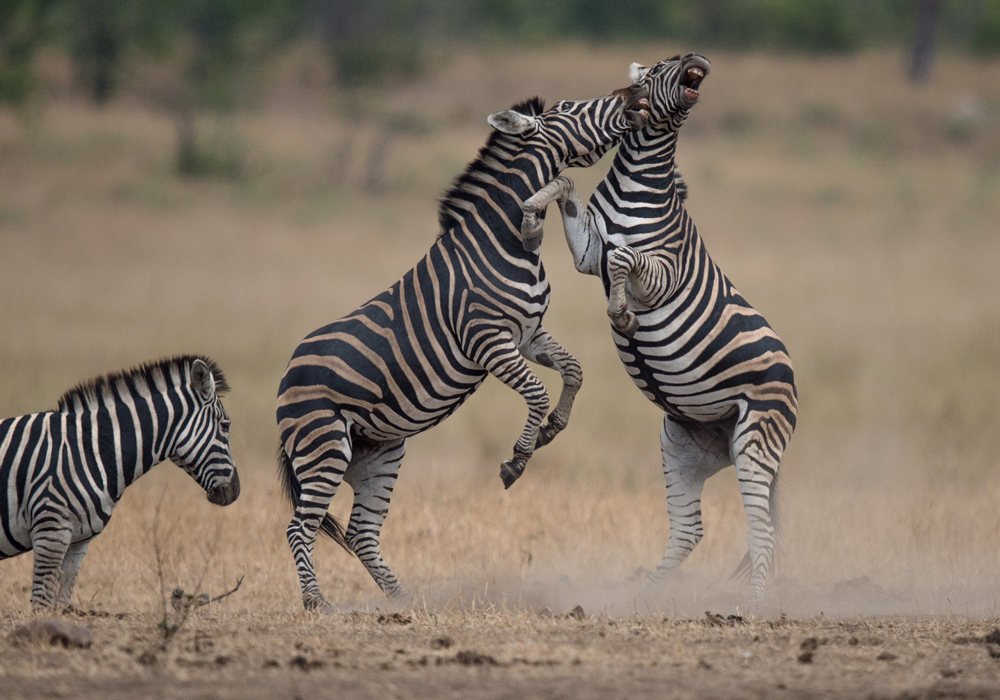
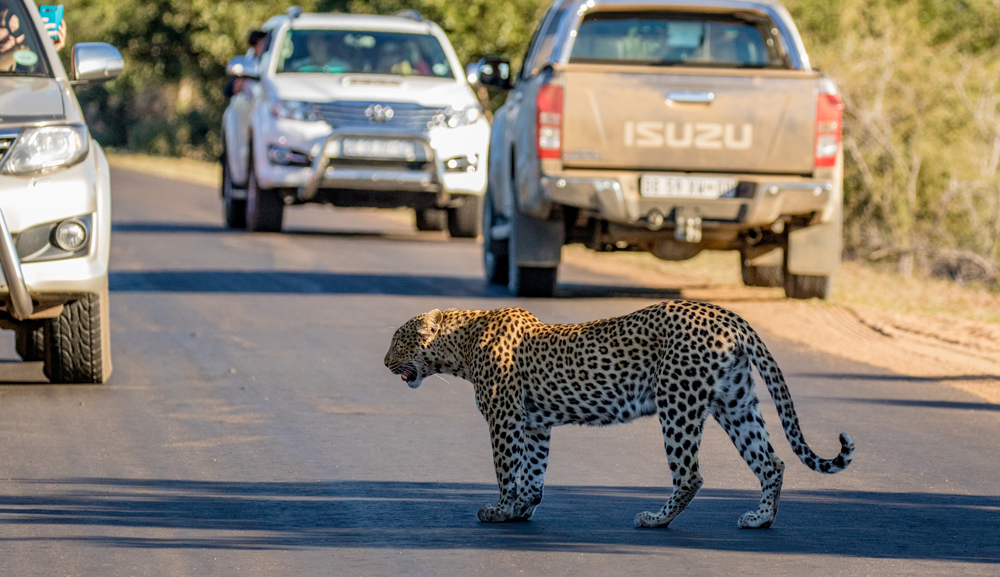
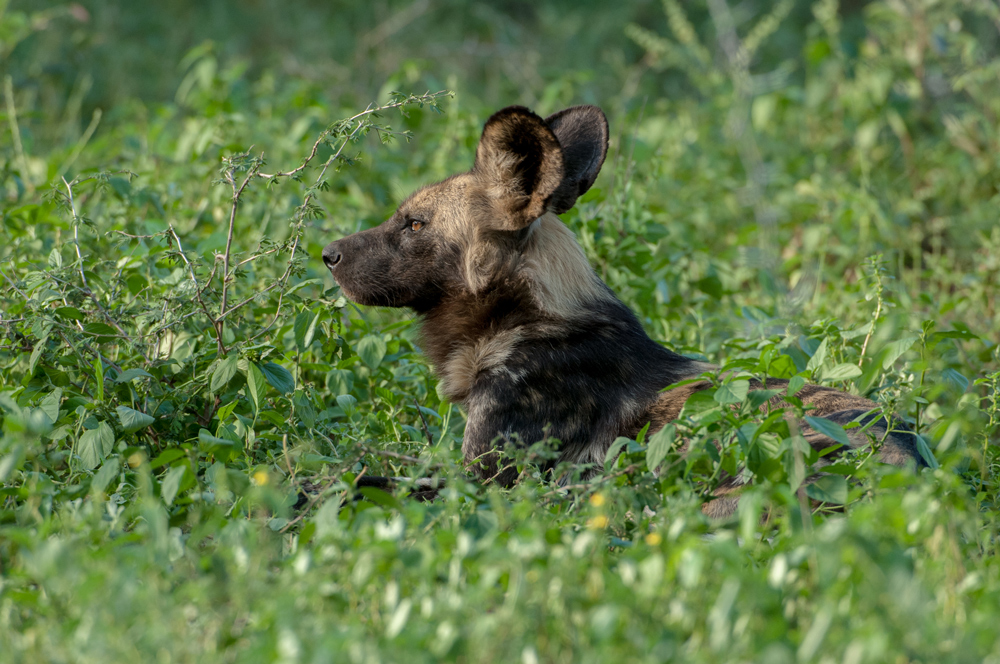
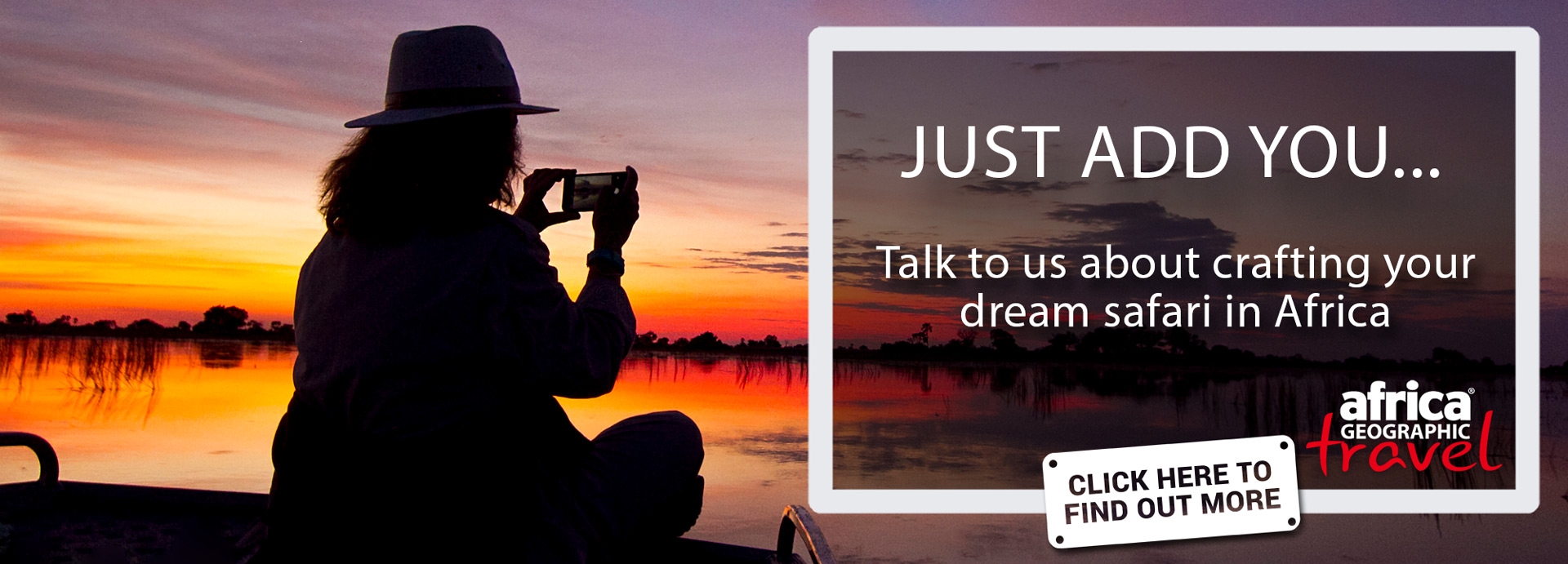
Which park is best for you?
Kgalagadi
The Kgalagadi is fantastic for camping enthusiasts, as the three South African rest camps are spacious and ideal for extended braais with gin and tonics in hand. On the Botswana side, no fences mean that lions licking your tent or hyenas coming to see what’s on the menu is not uncommon, and this connection to the wild is one of the many reasons that people return time and time again.
There are several more sophisticated accommodation options, such as the wilderness camps of Urikaruus and Kalahari Tented Camp, and a few lodges are available for those that don’t like roughing it, such as the community-owned Fair Trade Tourism certified !Xaus Lodge, and Ta Shebube’s Rooiputs and Polentswa lodges on the Botswana side. The new ‘riverfront chalets’ at Mata Mata are also lovely, overlooking the dry riverbed where wildebeest and springbok graze peacefully and jackals dart around at night.
However, camping is arguably why most people come to the Kgalagadi, and 4×4 trailers and rooftop tents are the way to fit in with the crowd. The Kgalagadi is best suited to those who like to kick back, relax and feel the desert breeze in their hair, don’t mind a little sand in their sheets, and enjoy a time that stands still and a silence broken only by the sound of a lion roaring.

The Kgalagadi camps do offer some guided 4×4 trails, safari walks and the usual game drives. We enjoyed three night-drives during our trip, which gave us the chance to spot lesser-seen nocturnal creatures, such as bat-eared and Cape foxes, spring hares, owls, genets and African wild cats. But I found the real joy of the Kgalagadi to be taking long, slow, sandy self-drives. However, do be warned that the corrugated roads cover patches of deep sand that are best navigated in a capable 4×4, as the guy stuck in his Renault Clio and the woman crying in her Toyota Corolla buried up to its chassis, will attest.
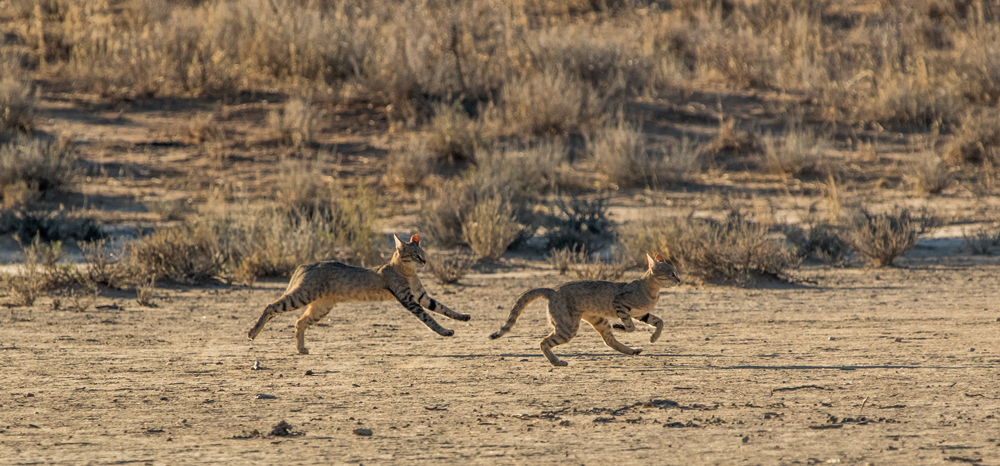
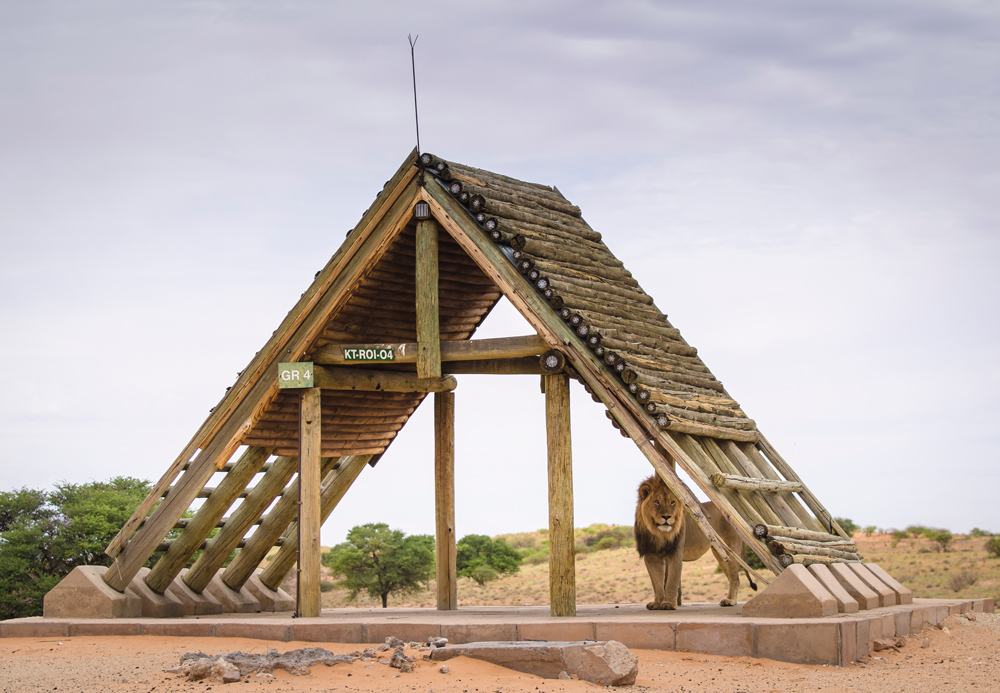
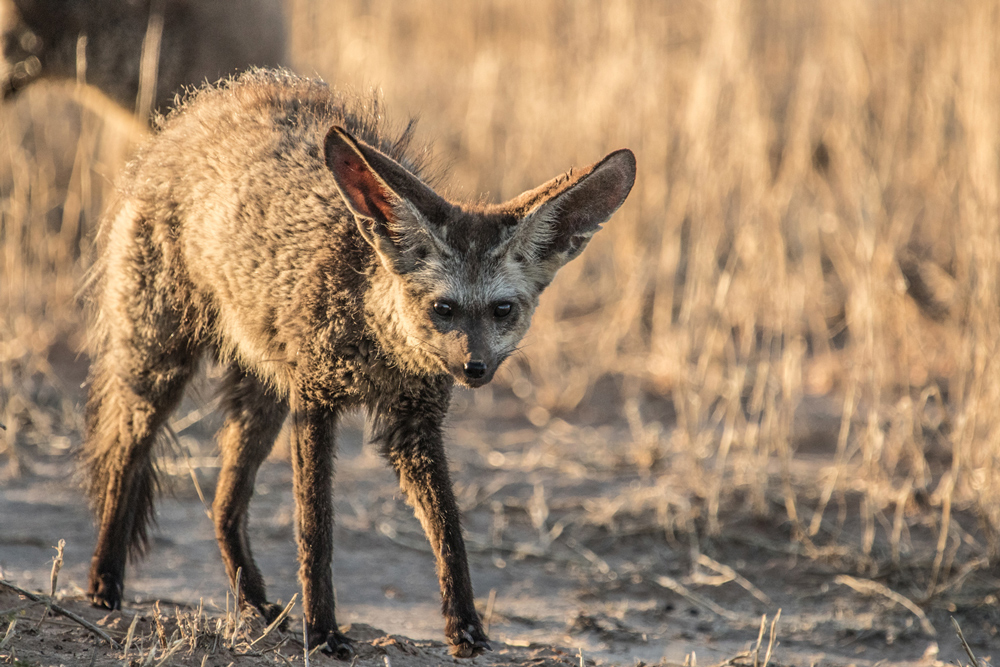
Kruger
One thing I love about the Kruger is the versatility that it offers. When budgets are tight, you can camp, caravan or hire a cheap room in one of the rest camps or a B&B just outside the park gates. But if you are celebrating something special or feel like a splurge, several private game lodges both within the park and in the private game reserves that make up the Greater Kruger region are on offer to cater to your every whim. This makes Kruger ideal for a wide range of travellers, be it honeymooners who want to be wined, dined and pampered, or families with young kids that want short bursts of game drives followed by a place where children can run free and parents can catch a nap in the heat of the day. The Kruger National Park rest camps also offer easy access to restaurants, shops and facilities, and this easy DIY-style of holiday is what makes the park appeal to a wide range of travellers.
Kruger also offers several road conditions, from main tarred stretches to dusty dirt roads. It also provides the chance to book guided game drives or even head off on a 4×4 eco-trail in the park. And while you may feel like a dinky car when face-to-face with an elephant in your rental Kia Picanto, it is quite possible and comfortable to enjoy Kruger in almost any vehicle. With accessible routes to follow and places to frequently stop, be it to enjoy a skottle breakfast, indulge in a decadent lunch or get out to take in the view, the Kruger National Park can be enjoyed in a multitude of ways.
For those that are ‘Krugered-out’ or ‘have done Kruger’ I recommend you take a trip to one of the quieter camps in the picturesque northern section of the park, enjoy a night sleeping out in a hide, book on the mountain bike trail at Olifants, or take a walk on the wild side with some of the best guides that you could ever have the pleasure of meeting on a backpacking trail.

Crossing borders
Kgalagadi
Transfrontier parks have been established so that animals can roam freely across invisible boundaries, and natural migration can take place. It’s about ecosystems taking pride of place over geological or political boundaries; promoting collaboration between the countries involved. This also allows us humans to roam free to some extent and, within the boundaries of the Kgalagadi Transfrontier Park, one can travel between South Africa and Botswana – without the need for a passport. Granted that one can’t exit into the surrounding countries (with the small exception of a tiny farmstall on the Namibian side outside Mata Mata to which you can quickly walk to pick up a gemsbok fillet for dinner).
Kgalagadi, at nearly 38,000km², is larger than many countries and one of the largest national parks in the world. It was officially declared a transfrontier park in 2000, making it the first of its kind in Africa. It is a combination of the Kalahari Gemsbok National Park in South Africa and the Gemsbok National Park in Botswana. The park is bordered by the peaceful countries of Botswana and Namibia and, with few settlements existing on the park boundaries, conservation efforts are embraced by all. The communities around the park are often made up of those that work in the park itself, so things like bushmeat poaching are a non-issue. While human-wildlife conflict occasionally raises its head when lions manage to breach the park’s boundaries, the communities seem willing to call those in charge to correctly handle the matter, rather than taking it into their own hands.
Part of the park is owned by the local Khomani San and Mier communities, and the local community is allowed to use the land for cultural purposes. It is on this land that the Fair Trade Tourism certified !Xaus Lodge can be found.
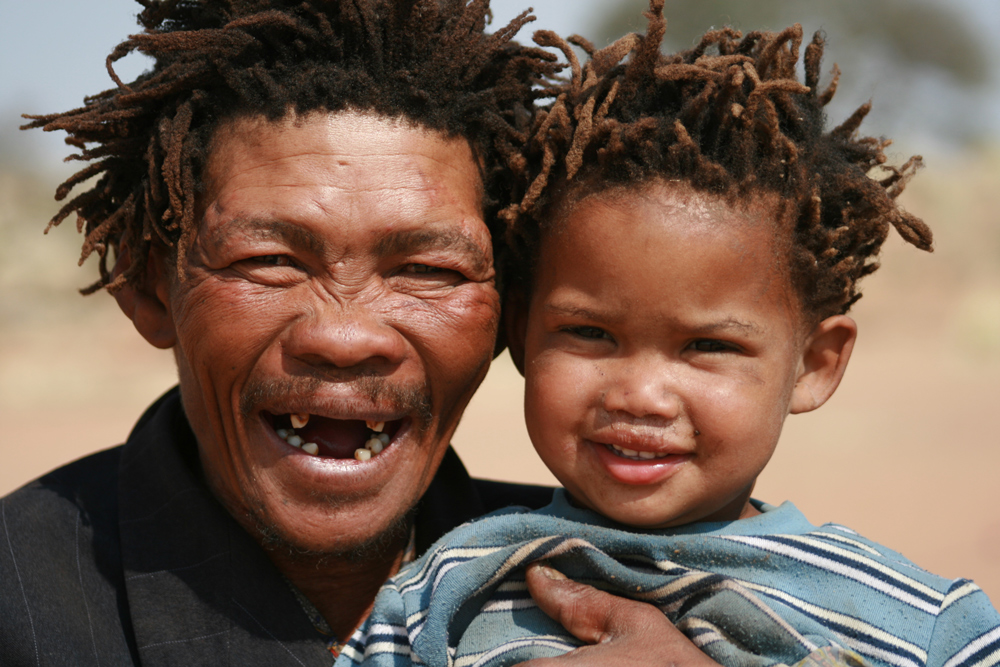

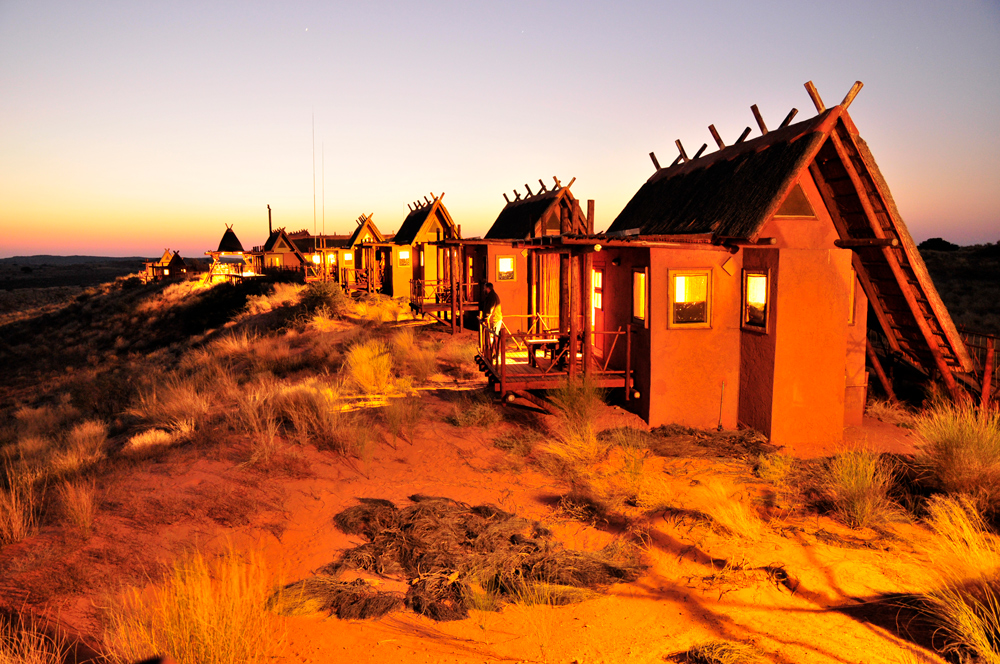
Kruger
The boundaries of the Kruger National Park cover nearly two million hectares in wild space. The national park was established in 1898 and, while talks for the declaration of a transfrontier park started in 1990, it was not until 2002 that the Great Limpopo Transfrontier Park was made official.
The Great Limpopo Transfrontier Park links the Kruger with its neighbours – the Limpopo National Park in Mozambique and Zimbabwe’s Gonarezhou National Park, Manjinji Pan Sanctuary and Malipati Safari Area. This conservation area also includes two areas between Kruger and Gonarezhou, namely the Sengwe communal land and the Makuleke region. This project joins some of the most beautiful and essential wildlife areas into a vast conservation area of over 37,000km². It is just the first phase in a plan for a larger transfrontier conservation area that will measure almost 100,000km².
With turbulent political climates in these countries, it is no secret that rhino poaching has ravaged the park and elephant poaching is on the rise. But it may only be through working together that these remaining wilderness areas are protected. With a memorandum of understanding between Mozambique and South Africa being implemented, we are now seeing coordinated law enforcement operations, management efforts, joint training initiatives and anti-poaching work across borders.
What this also means is that visitors are now offered several cross-border tourism experiences. In 2013 a wilderness walking trail in the Pafuri area was launched, and visitors can now cross easily from Kruger National Park in South Africa to Limpopo National Park in Mozambique – opening up a shorter route to the beautiful Mozambican coastline and that perfect bush and beach break.
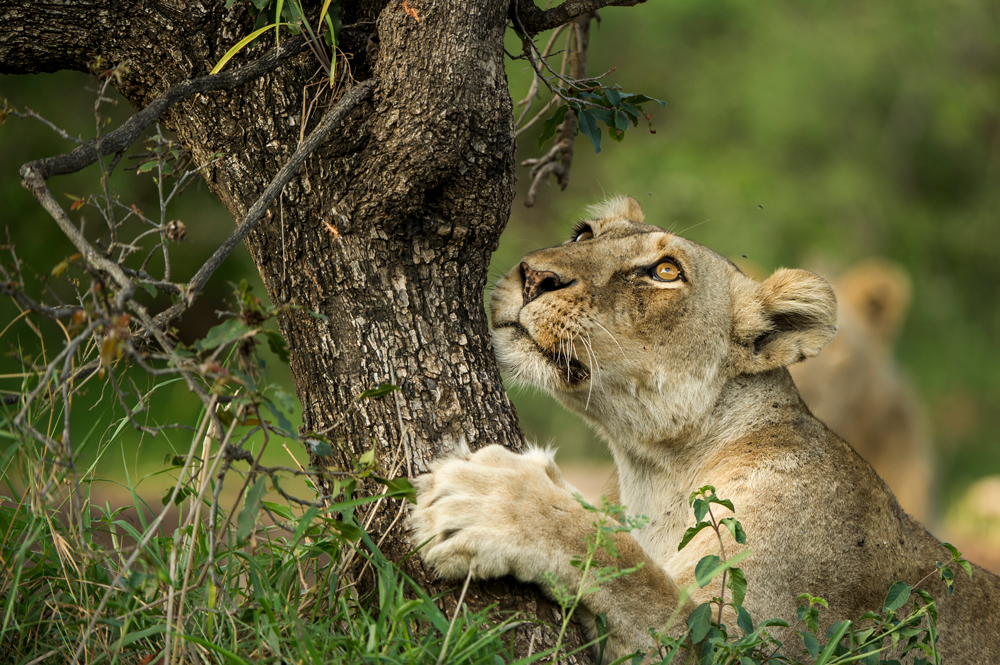
How to get there and what to do in the surrounding area
Kgalagadi
Stock up on food and water in Upington as the shops in the park are minimal. Be sure also to fill up here and take extra jerry cans for fuel, as while there are petrol stations at each of the three SANParks camps within the park, the fuel within the park can be unreliable. Upington is 255km away along a pleasant tarred road and is home to the nearest airport. Airlink flights from Johannesburg or Cape Town are available frequently, and from here you can hire a vehicle or book a transfer or tour with a company like Tata Ma Tata tours, which specialises in trips to the Kgalagadi and the surrounding areas.
A trip to the Kgalagadi can be combined with one of the other arid region national parks based nearby. Combine your trip with an adventure into Namibia to see the Quiver Tree Forest and to the /Ai/Ais Richtersveld for a dip in the hot springs and to take in the views over the Fish River Canyon. The Augrabies Falls National Park is also easily reached from Upington and offers the ideal overnight stop before heading down to see the flowers in Namaqualand and onwards along the coast to Cape Town.
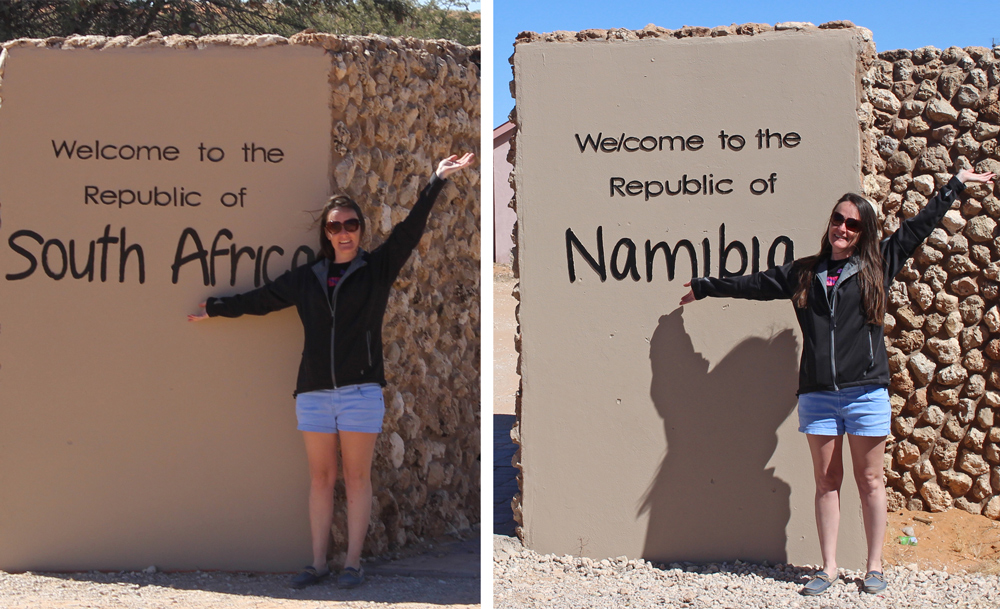
Kruger
Airlink flies from Cape Town or Johannesburg to Nelspruit KMIA or directly into the park via Skukuza’s airport, which I recommend. Car hire is available from either of these airports and, with some towns close to the various park gates and well-stocked shops within the rest camps, self-catering for your trip is super easy. The bigger rest camps are also home to some well-known restaurant franchises like Mugg & Bean, Cattle Baron and Wimpy, and the picnic sites either offer skottle facilities or little take-away spots for the peckish.
For those looking for a bit of luxury, private game reserves like the Sabi Sand, Manyeleti, Klaserie and Timbavati share open borders to the national park and form part of the Greater Kruger National Park ecosystem. You can even take a lodge link flight from Nelspruit KMIA or Skukuza directly to the door of one of the stunning Sabi Sand lodges like I did at Arathusa where I touched down to a leopard on the runway.
For accommodation options at the best prices visit our private travel & conservation club to view our collection of camps and lodges. If you are not yet a member, see how to JOIN below this story.
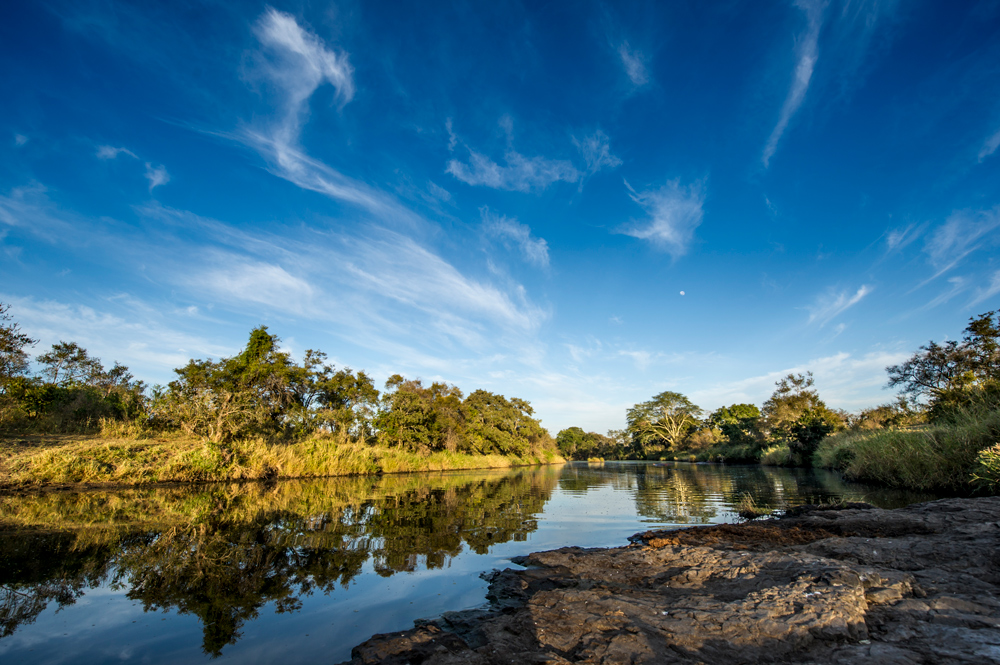
About the author
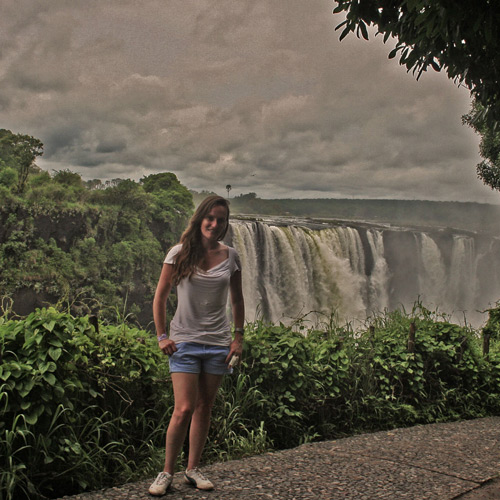 JANINE AVERY is the first to confess that she has been bitten by the travel bug… badly. She is a lover of all things travel, from basic tenting with creepy crawlies to lazing in luxury lodges – she will give it all a go.
JANINE AVERY is the first to confess that she has been bitten by the travel bug… badly. She is a lover of all things travel, from basic tenting with creepy crawlies to lazing in luxury lodges – she will give it all a go.
Janine is passionate about wildlife and conservation, and she comes from a long line of biologists, researchers and botanists.
To comment on this story: Login (or sign up) to our app here - it's a troll-free safe place 🙂.![]()






